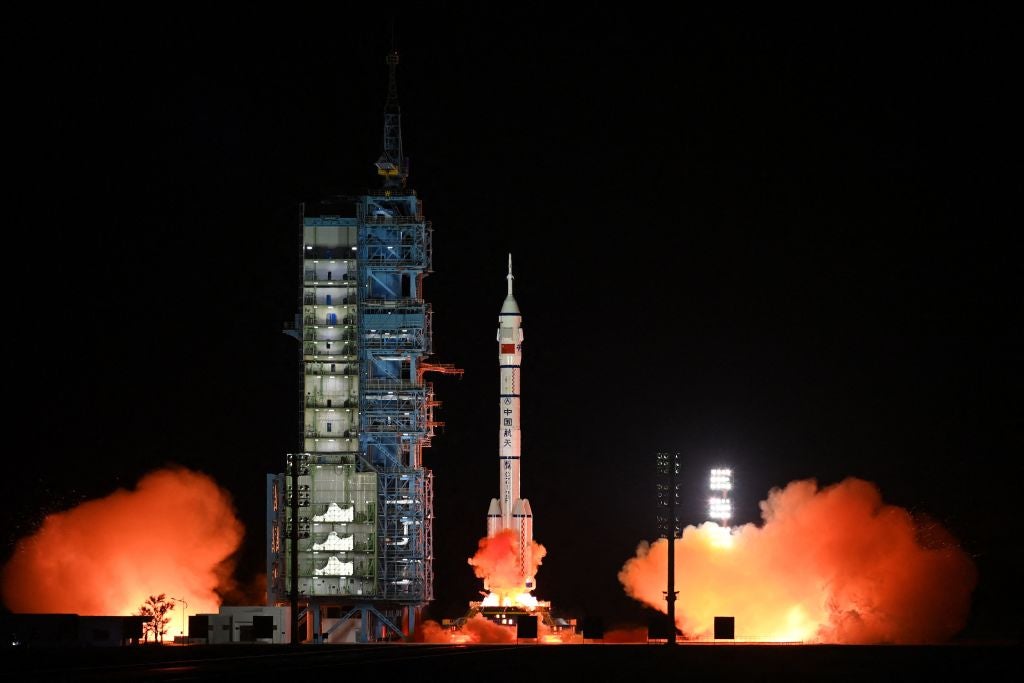China sends crew to new space station in historic mission
Tiangong station is now expanded to maximum size and will be in orbit for around 10-15 years

China has begun the first ever in-orbit crew rotation of its space station after three astronauts docked with the Tiangong on Wednesday morning.
The crew will overlap for several days with the three-member crew already onboard and expand the facility to its maximum size.
Docking with the Tiangong station came early on Wednesday, about 6 1/2 hours after the Shenzhou-15 spaceship blasted off atop a Long March-2F carrier rocket from the Jiuquan Satellite Launch Center.
The six-month mission, commanded by Fei Junlong and crewed by Deng Qingming and Zhang Lu, will be the last in the station’s construction phase, according to the China Manned Space Agency. The station’s third and final module docked earlier this month, one of the last steps in China’s effort to maintain a constant crewed presence in orbit.
The crew of the Shenzhou-15 will spend several days working with the existing three-member crew of the Tiangong station, who will return to Earth after their six-month mission.
Fei, 57, is a veteran of the 2005 four-day Shenzhou-6 mission, the second time China sent a human into space. Deng and Zhang are making their first space flights.
The station has now expanded to its maximum size, with three modules and three spacecraft attached for a total mass of nearly 100 tons.
The Tiangong can accommodate six astronauts at a time and the handover will take about a week. China has not yet said what further work is needed to complete the station. Next year, it plans to launch the Xuntian space telescope, which, while not part of Tiangong, will orbit in sequence with the station and can dock occasionally with it for maintenance.
Without the attached spacecraft, the Chinese station weighs about 66 tons – a fraction of the International Space Station, which launched its first module in 1998 and weighs around 465 tons.
With a lifespan of 10 to 15 years, Tiangong could one day be the only space station still up and running if the International Space Station retires in the coming years as planned.
While China’s crewed space program is officially three decades old this year, it truly got underway in 2003, when China became only the third country after the US and Russia to put a human into space using its own resources.
The program is run by the ruling Communist Party’s military wing, the People’s Liberation Army, and has proceeded almost entirely without outside support. The US excluded China from the International Space Station because of its program’s military ties, although China has engaged in limited cooperation with other nations’ space agencies.
China has also chalked up uncrewed mission successes: Its Yutu 2 rover was the first to explore the little-known far side of the Moon.
China’s Chang’e 5 probe also returned lunar rocks to Earth in December 2020 for the first time since the 1970s, and another Chinese rover is searching for evidence of life on Mars.
Officials are reporting considering an eventual crewed mission to the moon, although no timeline has been offered, even as Nasa presses ahead with its Artemis lunar exploration program that aims to send four astronauts around the moon in 2024 and land humans there as early as 2025.
Additional reporting from agencies.

Join our commenting forum
Join thought-provoking conversations, follow other Independent readers and see their replies
Comments